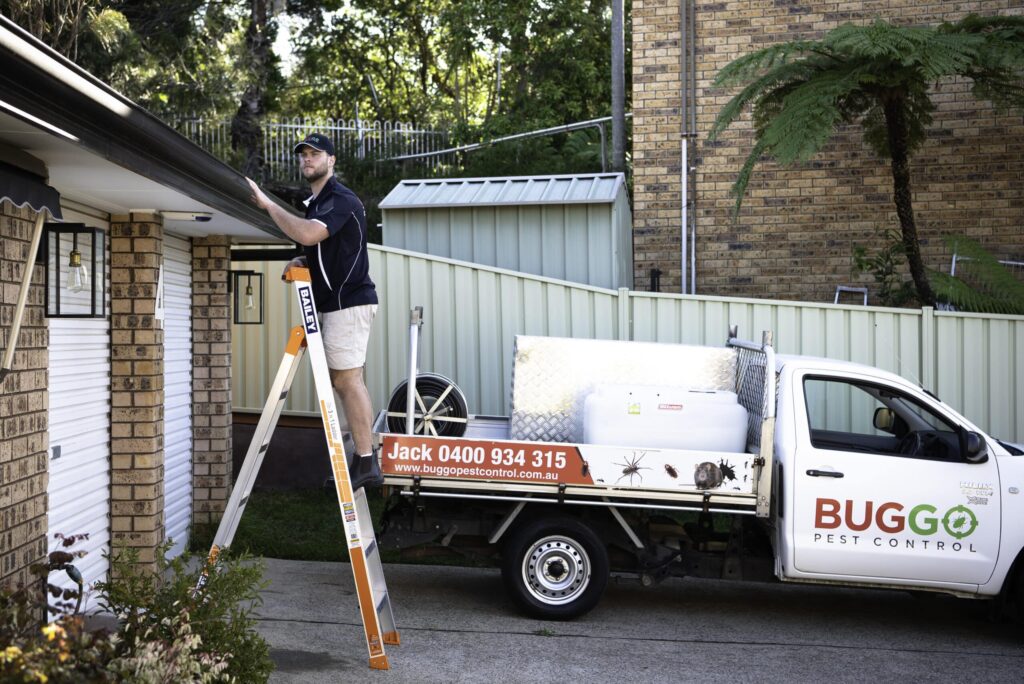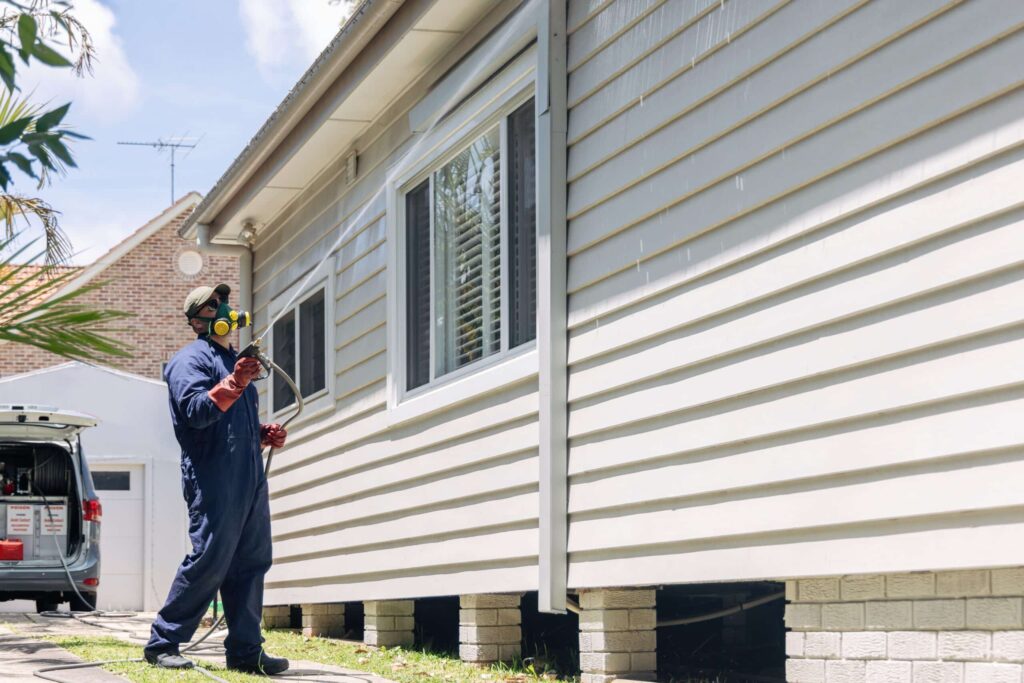Termites are a significant threat to homes across Sydney, causing extensive damage that can lead to costly repairs. These pests are often referred to as “silent destroyers” because they can chew through wood, flooring, and even wallpaper without being noticed until the damage is severe. Understanding how to protect your home from termites and what treatment options are available is essential for homeowners. This article will explore effective termite treatment methods and preventive measures to safeguard your property.
Understanding Termites
Termites are social insects that thrive in colonies, with some species capable of consuming wood at an alarming rate. They are primarily attracted to cellulose, which is found in wood, paper, and other plant materials. In Sydney, the most common types of termites include the Eastern Subterranean termite and the Formosan termite, both of which pose significant risks to residential properties. These pests are not only a nuisance but can also lead to substantial financial losses if left without termite treatment sydney they can silently undermine the structural integrity of homes and buildings.
Interestingly, termites play a vital role in the ecosystem by breaking down dead and decaying wood, recycling nutrients back into the soil. This natural process contributes to soil health and promotes plant growth, demonstrating that while termites can be destructive in urban settings, they also serve an essential function in forested areas. Their ability to digest cellulose is due to symbiotic microorganisms in their guts, which help break down the tough plant fibres. This fascinating relationship highlights the complexity of termite biology and their importance in maintaining ecological balance.
Life Cycle of Termites
The life cycle of a termite consists of several stages: egg, nymph, and adult. A queen termite can lay thousands of eggs each day, leading to rapid colony growth. Nymphs, which are immature termites, undergo several molts before becoming adults. This process can take several months, depending on environmental conditions and food availability. Understanding this life cycle is crucial for effective treatment and prevention strategies. In fact, the reproductive capacity of a termite colony can lead to exponential growth, with some colonies containing millions of individuals, making them particularly challenging to eradicate once they establish themselves.
Moreover, the caste system within a termite colony is quite remarkable. Each member has a specific role, whether as a worker, soldier, or reproductive. Worker termites are responsible for foraging for food, caring for the young, and maintaining the nest, while soldier termites protect the colony from predators. The queen and king, on the other hand, focus solely on reproduction. This division of labour not only enhances the efficiency of the colony but also ensures its survival in the face of threats, illustrating the intricate social structure that characterises these fascinating insects.

Signs of a Termite Infestation
Detecting a termite infestation early can save homeowners from extensive damage. Common signs include:
Wood that sounds hollow when tapped.
Frass (termite droppings) that resembles sawdust.
Swarmers (winged termites) near windows or doors.
Mud tubes along walls or foundations.
Regular inspections can help identify these signs before they escalate into a more significant problem. Additionally, homeowners should be vigilant about checking for any unexplained structural changes, such as cracks in walls or ceilings, which may indicate hidden termite activity. It is also beneficial to be aware of the environmental conditions that favour termite infestations, such as moisture-rich areas and wood-to-soil contact, as these factors can significantly increase the likelihood of an infestation. By maintaining a proactive approach, homeowners can safeguard their properties against these destructive pests. Read more about identifying a termite infestation at http://extension.msstate.edu/content/signs-termite-infestation
Preventive Measures for Termite Protection
Preventing termites from invading a home is far more effective and less costly than dealing with an infestation. Here are several strategies to consider:
Maintain Your Home’s Exterior
Keeping the exterior of your home in good condition is vital. Ensure that there are no wooden structures in direct contact with the soil, as this creates a pathway for termites. Additionally, keep gutters clean and ensure proper drainage to prevent moisture accumulation, which attracts termites.
Regular Inspections
Schedule regular inspections with a pest control professional to identify potential vulnerabilities in your home. These experts can check for signs of termite activity and recommend appropriate treatments if necessary. An annual inspection is often sufficient for most homes, but more frequent checks may be warranted in high-risk areas.
Use Physical Barriers
Installing physical barriers during construction, such as steel mesh or concrete, can help deter termites. These barriers are designed to prevent termites from accessing the wooden structures of your home. Additionally, using treated timber in construction can provide an extra layer of protection.
Termite Treatment Options
If a termite infestation is detected, various treatment options are available. The choice of treatment will depend on the severity of the infestation and the specific circumstances of the property.
Liquid Termiticides
Liquid termiticides are a popular choice for treating active infestations. These chemicals are applied to the soil around the foundation of the home to create a barrier that repels or kills termites. Some termiticides can also be injected directly into the wood to eliminate existing colonies. It is crucial to hire a licensed pest control professional for this treatment to ensure safety and effectiveness. Click here to learn about the process of liquid termiticides.
Baiting Systems
Baiting systems involve placing bait stations around the perimeter of the home. These stations contain a slow-acting insecticide that termites consume and carry back to their colony, effectively eliminating the entire population. Baiting systems can be an effective long-term solution, as they continuously monitor for termite activity and can be replenished as needed.
Fumigation
In severe cases of infestation, fumigation may be necessary. This method involves sealing the home and introducing a gas that penetrates all areas, killing termites in every stage of their life cycle. While fumigation is highly effective, it requires the homeowners to vacate the property for several days and can be more costly than other treatment options.
Choosing a Pest Control Professional
When selecting a pest control professional for termite treatment, it is essential to choose a reputable company with experience in dealing with termite infestations. Here are some factors to consider:
Qualifications and Experience
Ensure that the pest control technician is licensed and has adequate training in termite management. Experience in the local area can also be beneficial, as they will be familiar with the specific types of termites that are prevalent in Sydney.

Methods and Products Used
Inquire about the methods and products the company uses for termite treatment. Look for environmentally friendly options that are safe for children and pets. A good pest control professional will be able to explain the benefits and risks of various treatments and provide a tailored approach based on your home’s needs.
Customer Reviews and References
Reading customer reviews and asking for references can provide insight into the company’s reputation and effectiveness. Look for testimonials that highlight successful treatments and customer satisfaction. A trustworthy company will be happy to provide this information.
Cost of Termite Treatment in Sydney
The cost of termite treatment can vary widely based on several factors, including the size of the property, the extent of the infestation, and the chosen treatment method. On average, homeowners can expect to pay between £1,000 and £3,000 for professional termite treatment in Sydney.
Factors Influencing Cost
Several factors can influence the overall cost of termite treatment:
The size of the infestation: Larger infestations may require more extensive treatment, increasing costs.
Type of treatment: Fumigation tends to be more expensive than liquid treatments or baiting systems.
Accessibility: If the infestation is located in hard-to-reach areas, additional labour may be required, raising costs.
Long-Term Savings
While termite treatment can be a significant upfront expense, it is essential to consider the long-term savings. Preventing termite damage can save homeowners thousands of pounds in repairs. Investing in regular inspections and treatments can help maintain the integrity of the home and protect against future infestations.
Conclusion
Protecting your home from termites is crucial for maintaining its value and structural integrity. By understanding the risks associated with termites and implementing preventive measures, homeowners can significantly reduce the likelihood of an infestation. Should an infestation occur, various treatment options are available to eliminate these pests effectively. Engaging a qualified pest control professional is the best way to ensure your home remains safe from costly termite damage.
In Sydney, where termite activity is prevalent, taking proactive steps is essential. Regular inspections, proper maintenance, and timely treatments can make all the difference in safeguarding your home from these destructive pests.
Related : Termite Inspection Sydney: The Signs You Might Have an Infestation


Comments are closed